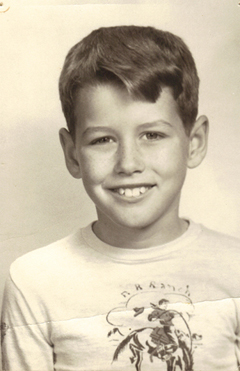The interestingly ugly is less discouraging, as Marx has it, than the merely plain, in landscapes as well as people.
In the run-up to the 20th century, ugliness as the inexplicable is rehearsed and moved from the grand abstraction of the sublime, Eco writes, to the centre of the human soul, as Mary Shelley dreams up her pathetic monster. Ugliness was further relativised and humanised; it was searched for and discovered to be everywhere. The uncanny is a kind of ugliness very near to home. Dr Hyde emerges and the formal invention of the unconscious draws ugliness into the idea of repression, so that all the monsters of the past and to come parade the terrors of the inevitable return of the repressed. There is no reason to look at the ugly, or to continue to look, unless it is representing something we need to see.
The closer we get to our own time, the more overtly interesting ugliness becomes. The 20th century is, for Eco, a time when we forced ourselves to look, long and hard, though in fact we had always looked, but in a more sidelong manner. Marinetti announced in the Technical Manifesto of Futurist Literature (1912): "They shout at us: "Your literature will not be beautiful! We will no longer have verbal symphonies, lulling harmonies, soothing cadences!" Let that much be clear! And thank goodness! We, on the other hand, will use all the brutal sounds, all the expressive cries of the violent life that surrounds us ... After free verse, finally words-in-freedom!' The avant-garde offers ugliness as a sign of beauty to come. The new forms of art Dadaism, Cubism, Surrealism were accused of ugliness and then absorbed and accepted, as though ugliness were only the form that beauty took before time had worked on it. All of it, horrifying even to those who admired it at the time, is eventually redeemed and regularised by habit or monetary value.
At last Eco arrives at his beloved kitsch as his modern example of ugliness, where high culture prances about squealing with joy at the bad taste and imitation of art of those beneath it. The Arnolfini Couple in the CalifornianPalace of Living Art, is a meticulous, life-sized, three-dimensional waxwork reproduction of the 15th-century portrait. The painting isn't ugly, so neither can its careful copy be so, but the idea of the copy, the populist, concrete imitation that offers itself as art but is actually unwitting parody, is the very definition of kitsch and therefore of ugliness. It's the thought, apparently, that counts. By the time we get to the here and now, ugliness has definitively disappeared into the eye of the beholder. A Bosch barbarian vies with a punk rocker for king of the fearsomely pierced; Blake's complaint at the dark satanic mills stands side by side with Stockhausen's exclamation of the beauty of the attack on the TwinTowers; and Caliban joins the circus of Tod Browning's Freaks. The one thing the reader of Eco's book does not want to do is look away. As Frank Zappa doowoped,
What's the ugliest
Part of your body?
What's the ugliest
Part of your body?
Some say your nose
Some say your toes
But I think it's your mi-i-i-i-nd I think it's your mind,
I think it's your mind,
I think it's your ...
-
(Note: You can view every article as one long page if you sign up as an Advocate Member, or higher).





